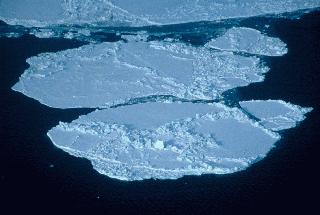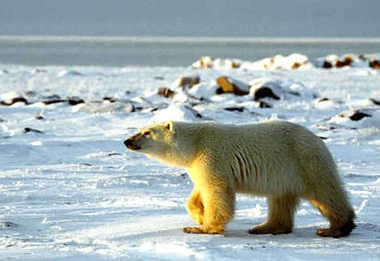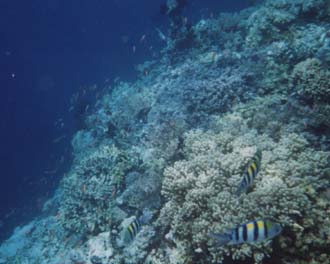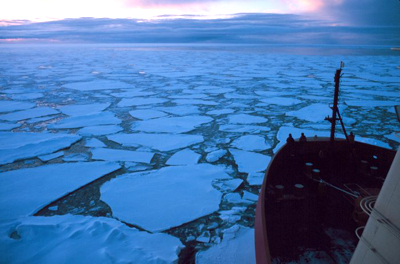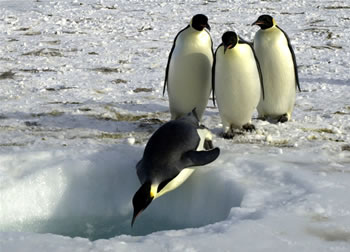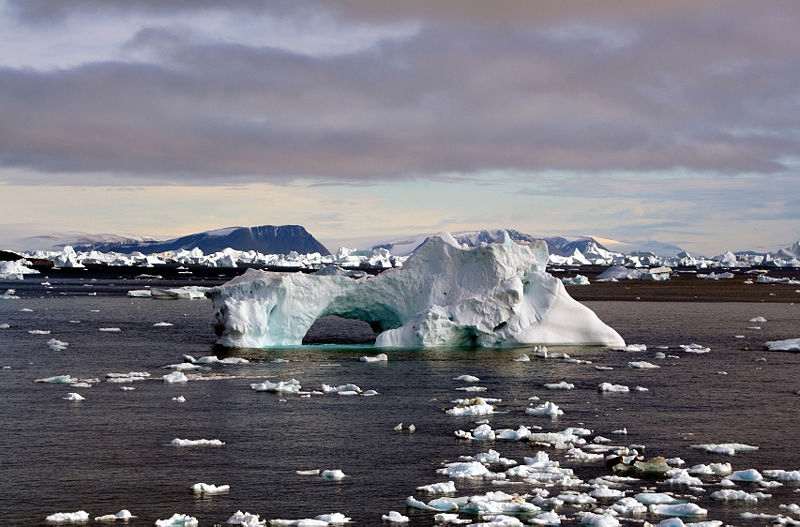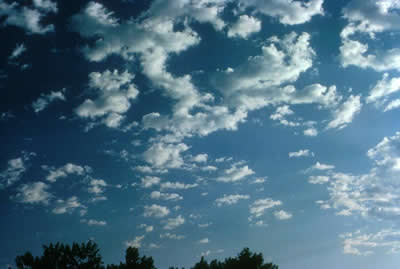Compare Images of Arctic Sea Ice Extent Side-by-side
The pictures below show sea ice around the North Pole. Click on the popup menus above the pictures to choose which pictures to look at. You can look at two pictures at once and compare them.
Try this:
- compare the sea ice in March and September for the same year (like March 2000 and September 2000)
- compare the sea ice in March for two different years (like March 1979 and March 2010)
- compare the sea ice in September for two different years
- click here if you want to look at sea ice in the southern hemisphere
Sea ice builds up during the winter when it is cold. When is there the most sea ice? There is usually a lot of sea ice in early spring, right after winter ends, around March.
Over the summer, when it is warm, the sea ice melts. When is there the least sea ice? Since a lot of ice melts in the summer, there is usually much less sea ice in early fall around September, right after the end of summer.
It seems like there is less sea ice now than there was 20 or 30 years ago. Scientists think that global warming is causing more and more of the ice to melt. They think that there is about 11% less sea ice every decade (a decade is 10 years).
The pink line in the pictures shows where the edge of the sea ice is, on average, in that month. Compare the edge of the ice in 1979 to the pink line. Now compare the edge of the ice in 2010 to the pink line. Do you see any difference?
Click here to see a movie of changes in sea ice over seven years (2002 through 2008). Watch how the ice melts in the summer and freezes and grows in the winter.
If you want to see more pictures of sea ice, go to the NSIDC web site to:
- Look at pictures of sea ice extent and make movies.
- Look at more than one picture of sea ice at the same time so you can compare.






